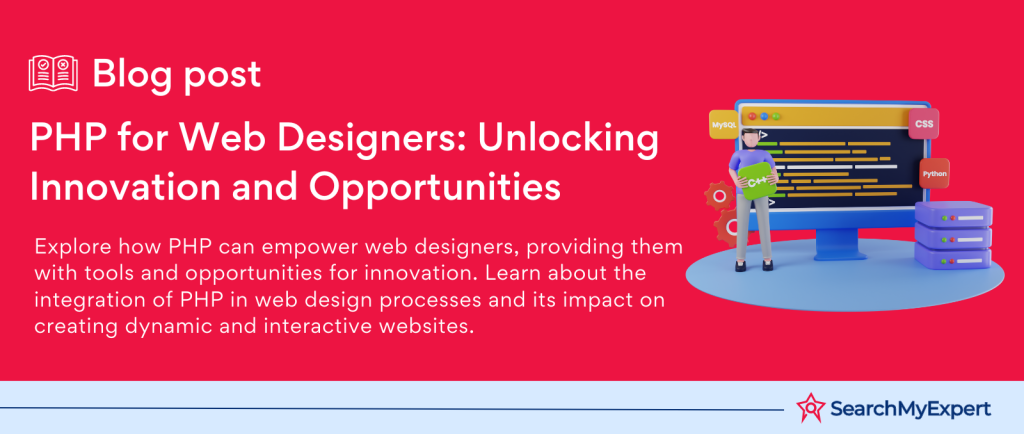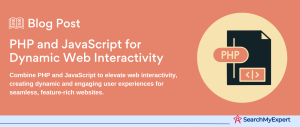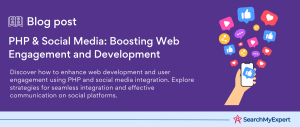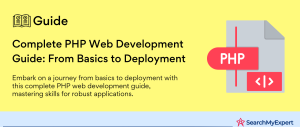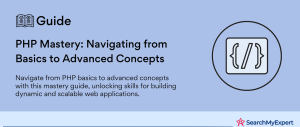PHP for Web Designers: Bridging the Gap
The Designer’s Dilemma
In the world of web design, a common challenge is the integration of dynamic elements and interactive features. Designers often grapple with the limitations of static HTML and CSS, struggling to bring their creative visions to life. They face hurdles like:
- Static Limitations:
Traditional design tools are great for static content but falter with dynamic user interactions. - Dependency on Developers:
Designers frequently rely on developers to implement complex features, leading to delays and communication gaps. - Difficulty in Realizing Interactivity: Achieving a high level of interactivity often requires extensive coding knowledge, which many designers lack.
PHP to the Rescue
Enter PHP, the knight in shining armor for web designers! PHP, a server-side scripting language, is a game-changer. It empowers designers to create dynamic and interactive websites with ease. Here’s why PHP is a big deal:
- Dynamic Content Delivery:
PHP makes it simple to incorporate dynamic content that responds to user interactions. - Ease of Learning:
With its straightforward syntax, PHP is accessible even for those with minimal programming experience. - Wide Adoption:
PHP powers a significant portion of the web, making it a reliable choice for web development.
Benefits for Designers
Learning PHP offers a plethora of advantages for web designers:
- Enhanced Control:
Break free from the constraints of static designs. PHP enables you to manipulate data, create dynamic interfaces, and more. - Custom Functionality: Tailor websites to specific needs. PHP’s flexibility allows for unique features and personalized user experiences.
- Improved Collaboration:
Speak the same language as developers! Understanding PHP fosters better communication and collaboration with the development team.
PHP isn’t just for developers. It’s a powerful ally for web designers, bridging the gap between design and development. Embrace PHP, and watch your creative capabilities soar!
Demystifying PHP Basics
Syntax Overview
Dive into PHP, and you’ll find its syntax user-friendly and logical. Key aspects include:
- Basic Syntax:
PHP scripts start with <?php and end with ?>. It’s a mix of HTML and PHP code. - Variables: They start with a $ sign. PHP is dynamically typed, so no need to declare variable types.
- Operators: PHP includes arithmetic, assignment, comparison, and logical operators. For example, +, -, =, ==, and &&.
Control Flow
Control structures in PHP guide the flow of your code. Here’s the lowdown:
- Conditionals:
if, else, and elseif let you execute code based on conditions. There’s also the switch statement for more complex scenarios. - Loops: Repeat tasks with while, do-while, for, and foreach loops. They’re handy for iterating over arrays or executing code a set number of times.
Functions and Libraries
Functions are the building blocks of PHP:
- Creating Functions: Define a function with function, add your code, then call it anywhere in your script.
- Built-in Functions: PHP boasts a vast array of built-in functions for various tasks, from handling strings to processing arrays.
- Pre-built Libraries: PHP comes with numerous libraries for things like image processing, database operations, and more. They’re like shortcuts to add complex functionalities without reinventing the wheel.
PHP’s syntax, control flow, and functions are intuitive and powerful. They offer a solid foundation for web designers to elevate their projects with dynamic and interactive features.
From Static to Dynamic
Dynamic Content with PHP
PHP transforms websites from static to dynamic marvels. Here’s how:
- Dynamic Text and Images: PHP scripts can change text and images based on user actions or other criteria.
- Real-time Data:
Display live data feeds, user-specific information, or time-sensitive content. - Interactive Forms: Create forms that adapt to user input, offering a personalized experience.
Database Integration
Databases and PHP are a match made in heaven:
- Basics of Databases: Understand SQL and how databases store and retrieve data.
- Connecting to a Database:
PHP connects to databases like MySQL, allowing you to fetch, insert, and manipulate data. - Dynamic Data Display: Display database content on your website, such as user profiles or product listings.
User Interaction and Forms
PHP excels in handling user input:
- Creating Forms: Build forms for data submission, like registrations or surveys.
- Data Processing:
PHP retrieves form data, validates it, and processes it – either storing it in a database or using it in some other way. - Feedback and Customization:
Use PHP to provide immediate feedback or customize the user experience based on the input received.
PHP brings websites to life. It enables dynamic content, seamless database interactions, and interactive user forms, enhancing the overall user experience.
Building Interactive Elements
Animations and Effects
PHP and interactive elements are a dynamic duo:
- Animating Web Pages:
PHP can dynamically generate JavaScript or CSS for animations. - Interactive Sliders and Popups: Use PHP to customize sliders and popups based on user data or preferences.
- Real-time Updating Elements:
Create elements that update in real-time, like news tickers or live stats.
Client-Side Scripting with JavaScript
PHP and JavaScript are a powerful combination:
- Enhanced Interactivity: While PHP runs server-side, JavaScript handles client-side tasks, offering a seamless user experience.
- Ajax for Dynamic Updates: PHP can work with Ajax (Asynchronous JavaScript and XML) to update parts of a page without reloading.
- JavaScript-PHP Interaction:
Use JavaScript to send data to a PHP server, process it, and return results without page refreshes.
Security Considerations
Security is paramount in PHP development:
- User Authentication: Implement secure login systems to protect user data.
- Data Validation and Sanitization: Ensure that incoming data is safe and valid to prevent security vulnerabilities.
- Best Practices:
Regular updates, secure coding practices, and understanding common security threats are essential.
PHP’s ability to create interactive elements, combined with JavaScript for client-side scripting, offers endless possibilities. However, always prioritize security in your PHP applications.
Design-Driven Development
Prototyping with PHP
PHP isn’t just for final products; it’s a prototyping powerhouse:
- Interactive Prototypes:
Create dynamic, functional prototypes to validate designs. - Real Data Testing:
Use PHP to feed real data into prototypes for accurate testing. - Rapid Iterations: Quickly modify and test different design aspects with PHP’s flexibility.
Collaboration with Developers
Communication is key in web development:
- Shared Language:
Understanding PHP helps designers communicate more effectively with developers. - Joint Problem Solving:
Work together to find innovative solutions to design challenges. - Efficient Workflow:
Streamline the design-development process, reducing back-and-forth and misunderstandings.
Design Systems and Frameworks
PHP supercharges design systems and frameworks:
- Design Systems: Use PHP to maintain consistent design elements across multiple web pages or projects.
- PHP Frameworks: Explore frameworks like Laravel or Symfony that offer structured, efficient ways to build robust web applications.
- Template Engines:
Leverage PHP-based template engines like Twig for more maintainable and scalable designs.
PHP is instrumental in design-driven development. From prototyping to collaboration, and utilizing design systems, PHP offers a versatile and efficient approach to web design.
Resources and Learning Paths
Online Tutorials and Courses
PHP learning is just a click away:
- Beginner Guides: Start with PHP.net’s official documentation – it’s comprehensive and free.
- Interactive Learning Platforms: Websites like Codecademy and Udemy offer interactive courses for hands-on learning.
- Video Tutorials: YouTube channels and online platforms like Coursera provide in-depth video tutorials for visual learners.
Community and Support
You’re not alone in your PHP journey:
- Forums and Groups: Platforms like Stack Overflow, Reddit’s r/PHP, and PHP communities on social media offer invaluable peer support.
- Meetups and Conferences: Attend local or online PHP meetups and conferences to network and learn from experienced professionals.
- Open Source Contribution: Contribute to open-source PHP projects to learn from real-world code and collaborate with others.
Building a Portfolio
Show off your PHP skills:
- Personal Projects: Create your own PHP projects – websites, apps, or tools – to demonstrate your skills.
- Showcase Variety: Include different types of projects to show your range – from simple scripts to complex web applications.
- Online Portfolio: Use platforms like GitHub or a personal website to present your PHP projects, making it easy for potential clients or employers to see your work.
A wealth of resources is available for learning PHP. Engage with the community, build a diverse portfolio, and leverage the abundance of online tutorials and courses. Your PHP journey is an investment in your future as a web designer.
Empowering Designers
PHP: A Designer’s Secret Weapon:
- Beyond Static Limits: PHP opens doors to dynamic, interactive design possibilities.
- Control and Customization:
Gain unprecedented control over web design, customizing to the nth degree. - Creative Liberation:
Free your creativity! PHP lets you implement ideas that static HTML/CSS can’t handle.
Looking Ahead with PHP:
- Ever-Evolving Web: The web is constantly evolving, and PHP adapts with it, ensuring your skills remain relevant.
- Integration with New Technologies: PHP seamlessly integrates with emerging tech like AI and IoT, keeping you at the forefront of innovation.
- Sustainable Development: PHP’s efficiency and robustness make it a sustainable choice for the long term.
Call to Action
Your PHP Journey Begins Now:
- Take the Leap: Step into the world of PHP. It’s an investment in your future as a designer.
- Continuous Learning:
Embrace the journey of learning and growth. Every line of code is a step forward. - Join the Community: Engage with the PHP community. Collaborate, learn, and grow together.
Conclusion
PHP is more than a coding language; it’s a tool that unlocks new horizons in web design. Embrace PHP, and witness your designs evolve from static pages to dynamic, interactive experiences.
Revolutionize your web development with our PHP Development Service.
Table of Contents
Toggle
